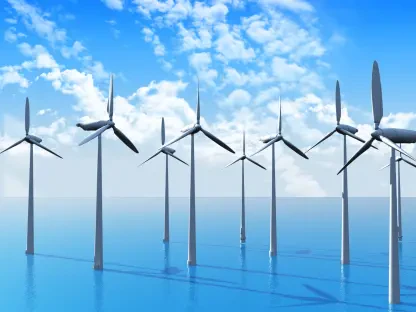As the demand for reliable energy continues to rise, the challenge of modernizing aging utility infrastructure while managing increasing costs has never been more critical. Utilities like New York State Electric and Gas (NYSEG) and National Fuel are navigating the complexities of enhancing their systems to meet future energy demands while addressing the financial implications for their customers. The New York Public Service Commission has approved rate increases to support these infrastructure updates, highlighting the tension between necessary technological advancements and the economic burden on consumers.
The Necessity of Infrastructure Upgrades
Dennis Kuhn of NYSEG has emphasized the importance of upgrading such infrastructure to ensure that utilities can meet future energy needs and maintain reliable service. With a commitment of $7 billion, NYSEG is updating equipment that dates back as far as the 1940s, replacing outdated components with modern, solid-state apparatus. This considerable investment includes significant projects, such as the renovation of the Big Tree substation in Orchard Park, a critical power source for the Buffalo Bills’ stadiums and the surrounding community. These enhancements are designed to improve energy reliability but also come with a notable financial impact on customers.
The ongoing upgrades extend beyond substations to include electrical poles, underground systems, and other essential infrastructure components. While these updates are necessary to support a more reliable and efficient energy network, they require substantial financial outlays. Dennis Kuhn likens the situation to managing a household budget, where prioritizing essential updates is crucial, even as it places pressure on overall finances. Utilities are aware of the financial strain these enhancements might place on consumers, yet they must balance these concerns with the unavoidable reality of aging infrastructure.
Financial Strain on Households
Amid rising utility rates, many households are already feeling the pinch. Clarke Gocker of PUSH Buffalo points out that the increasing costs of groceries, fuel, rent, and mortgages compound the burden of higher energy bills, resulting in approximately one in seven households falling behind on payments. These families collectively owe over $1.3 billion, a staggering figure that underscores the financial stress they face. To combat this issue, PUSH Buffalo advocates for the passage of the HEAT Act, which aims to cap utility costs at 6% of a household’s income and eliminate $200 million annually in subsidies to utility companies.
The HEAT Act also promotes renewable heating and cooling solutions, directly challenging National Fuel’s stance that an electric network for heating is impractical. Advocates argue that transitioning to renewable energy sources is not only feasible but necessary for long-term sustainability. However, the move towards renewable energy solutions must be balanced with the immediate need to keep utility costs affordable for vulnerable households. This balancing act requires careful consideration of both short-term financial impacts and long-term energy goals.
Solutions for Affordable Energy
As the demand for dependable energy surges, the necessity of modernizing outdated utility infrastructure while managing escalating costs has reached a critical juncture. Utilities such as New York State Electric and Gas (NYSEG) and National Fuel are maneuvering the intricate process of upgrading their systems to cater to future energy needs, all while balancing the financial impacts on their customers. The New York Public Service Commission has sanctioned rate increases to finance these vital infrastructure improvements, underscoring the tension between essential technological progress and the economic strain on consumers. This ongoing scenario highlights the complex balancing act utilities face: ensuring reliable, future-oriented services while grappling with the associated financial burdens that such advancements entail. This tension between investment in infrastructure and financial impact on customers is pivotal as utilities strive to meet evolving energy demands.









